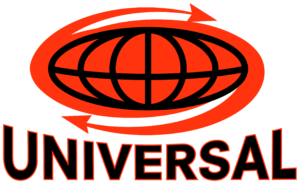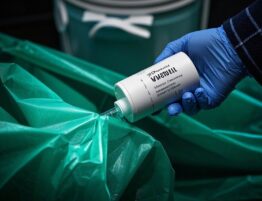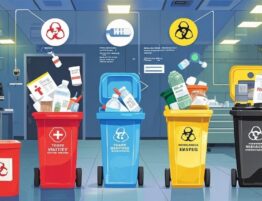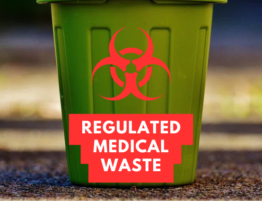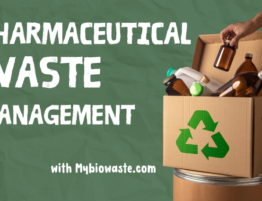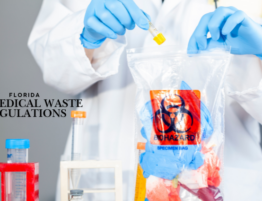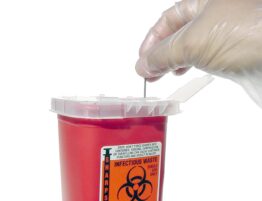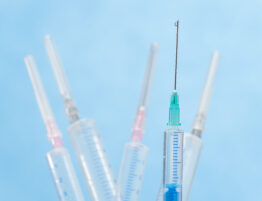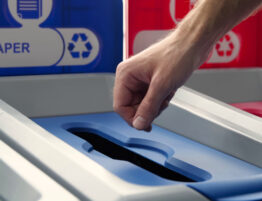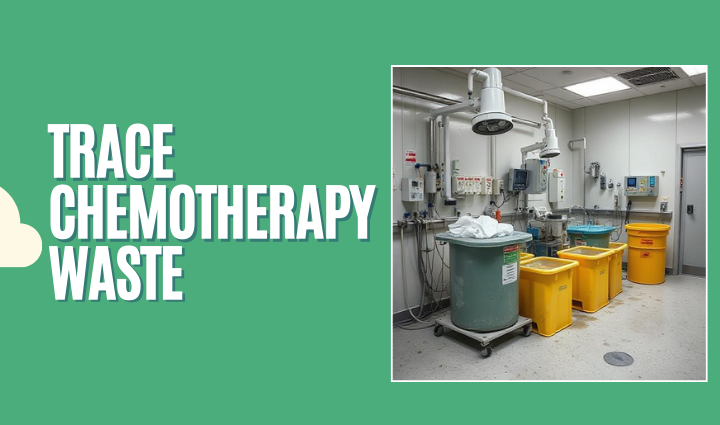
Chemotherapy drugs are a powerful force against cancer, saving lives every day. But with their incredible potency comes responsibility for the proper disposal of trace chemotherapy waste is essential to protect healthcare workers, the environment, and public health. This article explores what trace chemotherapy waste is, why it matters, and how healthcare facilities can handle it safely and effectively.
What Is Trace Chemotherapy Waste?
Trace chemotherapy waste refers to materials that have been in contact with chemotherapy drugs but contain only residual amounts (less than 3% of the original volume). This includes:
- Empty chemotherapy vials and syringes
- Used IV bags and tubing
- PPE such as gloves, gowns, and masks used in chemotherapy administration
- Wipes and materials used for drug preparation or cleanup
Unlike bulk chemotherapy waste, which contains significant amounts of active drugs, trace chemotherapy waste is classified as RCRA-empty (Resource Conservation and Recovery Act) and can be disposed of in designated yellow containers rather than hazardous waste bins.
Why Is Proper Disposal of Trace Chemotherapy Waste Important?
1. Protects Healthcare Workers
Chemotherapy drugs are cytotoxic, meaning they can damage or kill cells. Even trace amounts pose risks if they come into contact with skin or are inhaled. Proper disposal prevents accidental exposure, ensuring the safety of nurses, pharmacists, and waste handlers.
2. Safeguards the Environment
Improper disposal of trace chemotherapy waste can contaminate water sources, soil, and wildlife. These drugs are designed to interfere with cell growth, making them particularly hazardous in ecosystems. Correct waste management prevents pollution and keeps our environment safe.
3. Ensures Regulatory Compliance
Regulations from agencies like the EPA (Environmental Protection Agency), OSHA (Occupational Safety and Health Administration), and USP <800> require healthcare facilities to manage chemotherapy waste properly. Failing to comply can lead to fines, legal issues, and reputational damage.
4. Reduces Healthcare Costs
Mixing trace chemotherapy waste with general medical waste increases disposal costs. By using proper waste segregation, healthcare facilities can reduce unnecessary hazardous waste disposal expenses while maintaining compliance.
How to Properly Dispose of Trace Chemotherapy Waste
Step 1: Use Designated Yellow Waste Containers
Trace chemotherapy waste should be placed in yellow rigid containers or bags specifically designed for this purpose. These containers are separate from black hazardous waste bins, which are reserved for bulk chemotherapy waste.
Step 2: Follow Labeling and Storage Guidelines
All waste containers must be properly labeled to prevent cross-contamination. They should also be stored in a secure area until they are transported for final disposal.
Step 3: Partner with a Certified Waste Disposal Company
Healthcare facilities should work with licensed medical waste disposal services to ensure compliance with local and federal regulations. These companies specialize in safely handling and disposing of trace chemotherapy waste.
Step 4: Train Healthcare Staff Regularly
Regular training on chemotherapy waste management helps prevent accidental exposure and ensures compliance with the latest regulations. Staff should know how to handle, store, and dispose of trace chemotherapy waste correctly.
Step 5: Implement Best Practices for Waste Reduction
- Use closed-system transfer devices (CSTDs) to minimize spills and contamination
- Opt for prefilled syringes to reduce waste generation
- Regularly audit waste disposal procedures to improve efficiency
The Role of Technology in Safe Chemotherapy Waste Disposal
Innovative waste management solutions are making it easier than ever to handle trace chemotherapy waste safely. Some emerging technologies include:
- Automated waste tracking systems that monitor disposal processes and ensure compliance
- Waste volume reduction systems that safely neutralize and compact chemotherapy waste
- Smart PPE and gloves with built-in contamination detection to reduce exposure risks
By embracing these technologies, hospitals and clinics can enhance safety, improve compliance, and reduce costs.
Common Myths About Trace Chemotherapy Waste
Myth 1: All Chemotherapy Waste Is the Same
Fact: Only bulk chemotherapy waste is classified as hazardous. Trace chemotherapy waste is RCRA-empty and can be disposed of in designated yellow containers.
Myth 2: It’s Okay to Throw Chemotherapy Waste in Regular Trash
Fact: Chemotherapy waste requires specialized handling to prevent exposure and environmental harm. Throwing it in regular trash is dangerous and illegal.
Myth 3: Small Facilities Don’t Need a Chemotherapy Waste Plan
Fact: No matter the size of the facility, proper chemotherapy waste disposal is essential to protect staff, patients, and the community.
Frequently Asked Questions (FAQs)
1. How can I tell if a chemotherapy container is RCRA-empty?
A container is considered RCRA-empty if it contains less than 3% of the original chemotherapy drug. If there is more than 3%, it must be disposed of as bulk chemotherapy waste in a black hazardous waste container.
2. What happens if chemotherapy waste is improperly disposed of?
Improper disposal can lead to environmental contamination, healthcare worker exposure, regulatory fines, and legal action against healthcare facilities.
3. Are all chemotherapy drugs classified as hazardous?
Not all chemotherapy drugs are classified as hazardous waste under RCRA. However, all chemotherapy-related waste should be managed carefully to prevent exposure.
4. Who regulates chemotherapy waste disposal?
Chemotherapy waste disposal is regulated by the EPA, OSHA, USP <800>, and state environmental agencies. Facilities must comply with these regulations to avoid penalties.
5. Can home care patients generate trace chemotherapy waste?
Yes. Patients receiving chemotherapy at home should follow their healthcare provider’s guidelines on properly disposing of contaminated materials, such as gloves and IV bags. Many home health agencies offer disposal services.
Final Thoughts
Properly managing trace chemotherapy waste is crucial for ensuring safety, sustainability, and regulatory compliance. By following best practices, training staff, and leveraging advanced waste disposal technologies, healthcare facilities can protect both people and the planet.
Take Action Today!
Visit MyBioWaste for reliable and compliant chemotherapy waste disposal services. They specialize in the safe collection, transportation, and disposal of medical waste, ensuring healthcare facilities meet all regulatory standards.
Address: 4459 Industrial Park Rd, Green Cove Springs, FL 32043
Phone: 855-276-9246
Email: info@mybiowaste.com
Take the first step toward a safer and more sustainable healthcare environment today!
